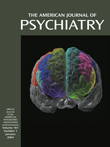Ziprasidone-Related Tardive Dyskinesia
Ms. A, a 70-year-old woman with chronic hepatitis C without cirrhosis (she had had interferon therapy in 1990) and no past psychiatric history was admitted to our hospital because of a first severe major depressive episode with mood-congruent psychotic features. Her psychiatric symptoms were judged not to be the direct physiological consequence of the chronic hepatitis C. A neurological examination, analysis of CSF, and magnetic resonance imaging, including proton magnetic resonance spectroscopic studies, yielded normal results. Therapy with citalopram, 40 mg/day, and haloperidol, 6 mg/day, was begun. After 6 days, she suffered from akathisia; haloperidol was stopped and replaced by quetiapine, which was gradually increased to a maintenance dose of 400 mg/day. Concomitantly, vitamin E (α-tocopherol, 500 IU/day) was given. She received ziprasidone as an alternative to quetiapine when the latter was discontinued after 12 months of treatment because of fatigue and a mildly depressed mood. The ziprasidone dose was gradually increased to 100 mg/day, and Ms. A’s depressive symptoms remitted. Repetitive involuntary jaw and toe movements were noticeable within 9 weeks of the initiation of ziprasidone treatment.
References
Information & Authors
Information
Published In
History
Authors
Metrics & Citations
Metrics
Citations
Export Citations
If you have the appropriate software installed, you can download article citation data to the citation manager of your choice. Simply select your manager software from the list below and click Download.
For more information or tips please see 'Downloading to a citation manager' in the Help menu.
There are no citations for this item
View Options
View options
PDF/ePub
View PDF/ePubGet Access
Login options
Already a subscriber? Access your subscription through your login credentials or your institution for full access to this article.
Personal login Institutional Login Open Athens loginNot a subscriber?
PsychiatryOnline subscription options offer access to the DSM-5-TR® library, books, journals, CME, and patient resources. This all-in-one virtual library provides psychiatrists and mental health professionals with key resources for diagnosis, treatment, research, and professional development.
Need more help? PsychiatryOnline Customer Service may be reached by emailing [email protected] or by calling 800-368-5777 (in the U.S.) or 703-907-7322 (outside the U.S.).

